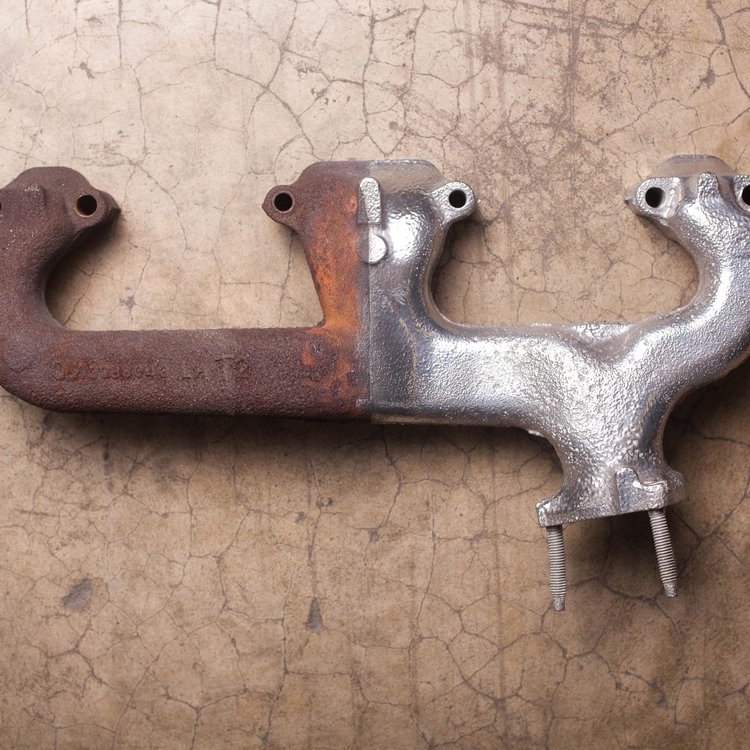5 Important Reasons You Should Ceramic Coat Your Exhaust Headers and Turbo Parts
When it comes to modification, there are a lot of options. A large number of those options are primarily cosmetic—rims, lights, mirrors, etc. Others have a significant impact on performance and efficiency, like intake, exhaust, CPU, headers, and turbo parts. When it comes to performance upgrades under the hood, it pays to get the best and protect it.
Custom headlights will endure minimal wear and tear over time, but the thermal stresses experienced by exhaust headers can cause significant damage over the life of the vehicle. Beyond that, if the headers aren't enhanced and protected (as with Jet-Hot's ceramic composite coating system), other parts under your hood will also suffer, and maximum horsepower gains will not be achieved.
Your vehicle is your pride and joy. You’re investing in it because you value it. That’s why it makes sense to buy quality parts and to protect the parts you have. It may cost you a little extra, but you’ll reap a host of benefits for your foresight. To help you understand why they are so valuable, we’ve listed the top five benefits that ceramic coated headers provide.
Prevent Corrosion and Discoloration
Engines produce a great deal of heat. Normal operating temperatures for a car engine are between 190 and 220 degrees Fahrenheit, but performance vehicles operate well above that. Exhaust gas temperatures (EGTs) for these vehicles regularly see 500 degrees, and some of them go beyond 1500. If that sounds hot, it should, since:
Most ovens only go to 500 degrees Fahrenheit
Aluminum melts at around 1200 degrees
The coolest kind of lava only gets as cool as 1300 degrees
Heat at these levels is enough to do some serious damage to a vehicle if not properly disposed of. Most of that heat is in the exhaust gas, so it’s important that the gas maintains most of its heat as it’s expelled out the tailpipe. While there’s no way to completely avoid heat leak, uncoated headers don’t do a very good job of insulating the exhaust gas, and the heat that’s lost affects the headers and the parts surrounding them.
Coating your headers in ceramic improves their heat resistance, and keeps them from being tarnished or damaged by the heat. In other words, ceramic coated headers look (and function) the same on mile one as they do on mile 300,000.
A ceramic header coating also provides protection against the corrosive materials in the exhaust. Ceramic is a highly durable substance that resists corrosion and stands up to a large amount of abuse. Properly coated headers are thus much more durable than the thinner pipes of uncoated headers.
Improve Heat Tolerance
Exhaust gas contains a lot of heat when it leaves the engine cylinders. In fact, both the catalytic converter and the exhaust system as a whole depend on this heat to function properly. The problem is basic headers aren’t especially proficient at retaining exhaust heat. Headers are pipe-like in design, meaning the walls are very thin. This leaves them vulnerable to both heat emission and damage from higher temperatures.
Ceramic is naturally heat resistant, making it capable of withstanding high temperatures. Different coatings are rated to different heat levels, depending on the intended application, and each coating drastically improves the durability of the header.
Protect Other Parts
Stock manifolds, as mentioned above, are better at retaining heat in the exhaust system. This is a functionality that’s lost when switching to basic headers as their thin pipes have a tendency to leak more heat into the surrounding engine compartment. Leaked heat raises under-hood temperatures and can cause serious damage to other parts, decreasing their functionality or destroying them entirely.
Just as the heat resistance of the ceramic coating protects the header itself, it also restricts heat emissions and lowers the under-hood temperature. This means it protects vulnerable plastic and electronic parts that weren’t meant to endure the heat levels produced by exhaust gases.
By slowing the transfer of heat from the gas to the air outside the pipe, ceramic coated headers better protect your entire vehicle.
Improve Efficiency
Just controlling the heat does a lot for your vehicle. First, because ceramic coated headers help keep the heat in the exhaust gas rather than letting it seep out, preventing heat leak speeds the expulsion of exhaust out the tailpipe. This decreases back pressure, which improves the efficiency of the engine. It also improves the effectiveness of the catalytic converter, allowing it to reduce your vehicle’s emissions, which is better for the environment.
Keeping the heat contained in the exhaust system also means that the under-hood temperature is lower. The air pulled in by the intake is much cooler, which is more beneficial to the engine by way of better oxygen/fuel mixture levels. As a result, each pump of the piston experiences more bang, boosting horsepower and overall performance.
Add Visual Appeal
Just because headers are a performance-based customization doesn’t mean they can’t have the appeal of cosmetic modifications. With a ceramic coating, headers take on a stylish, uniform finish that looks professional while being easy to care for. Not everyone is looking to wow onlookers with their engine compartment, but if you are, header coatings help you stand out from the crowd.
Learn more about ceramic header coatings and how they can improve the overall life of your vehicle at Jet-Hot.


